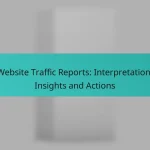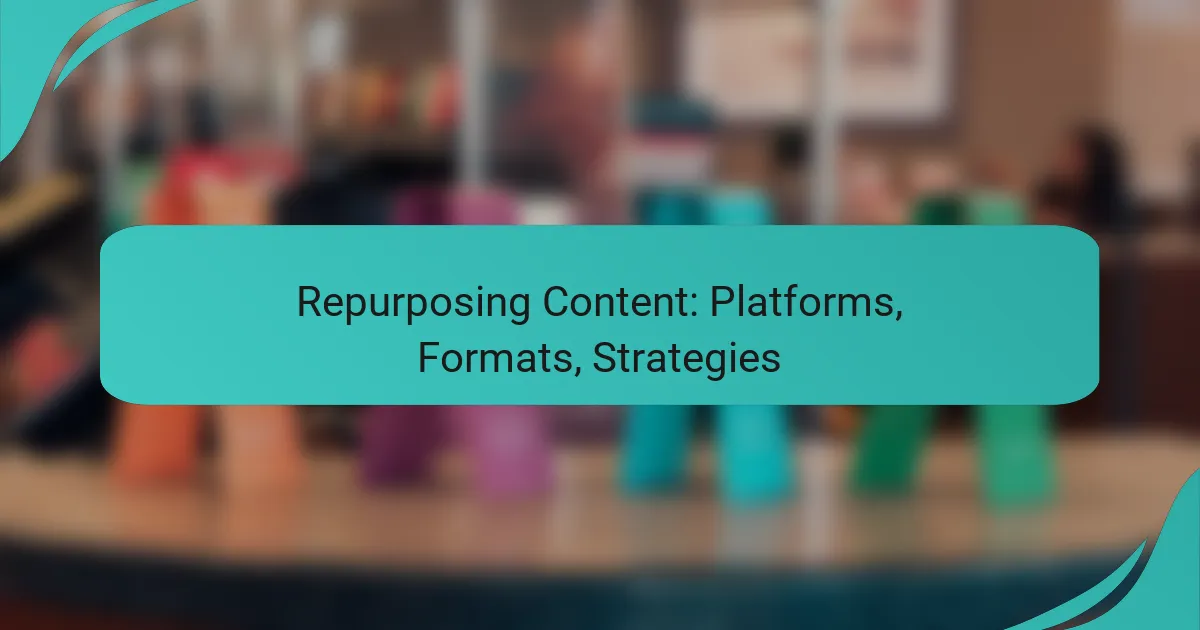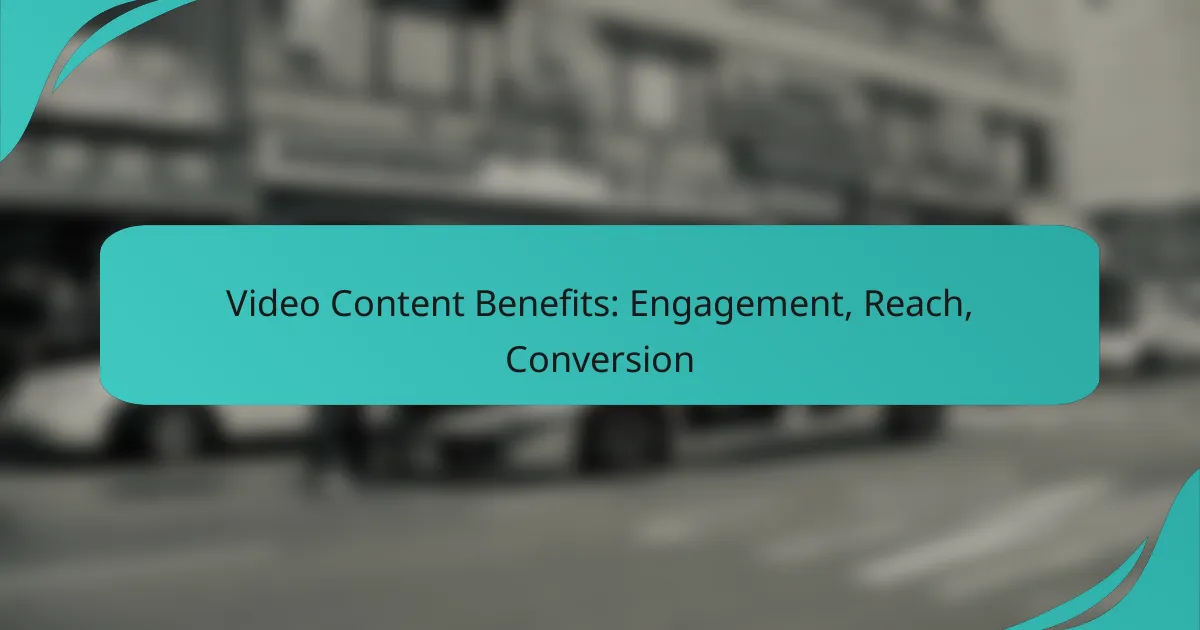The buyer’s journey is a critical framework that outlines the stages a potential customer experiences: awareness, consideration, and decision. Understanding these stages allows businesses to develop targeted strategies that effectively engage customers and guide them towards making informed purchasing decisions. By tailoring content to meet the unique needs of each phase, companies can enhance engagement and improve conversion rates.

How to navigate the buyer’s journey in the UK?
Navigating the buyer’s journey in the UK involves understanding the stages of awareness, consideration, and decision-making. Each stage requires tailored strategies to effectively engage potential customers and guide them toward a purchase.
Understanding buyer personas
Buyer personas are semi-fictional representations of your ideal customers based on market research and real data. In the UK, creating detailed personas helps businesses understand their audience’s needs, preferences, and behaviors, which is crucial for effective marketing.
To develop buyer personas, consider factors such as demographics, interests, and pain points. For instance, a persona for a UK-based tech company might include young professionals aged 25-35 who value innovation and sustainability.
Mapping customer touchpoints
Mapping customer touchpoints involves identifying all the interactions a potential buyer has with your brand throughout their journey. This can include online ads, social media, emails, and in-store experiences.
In the UK, it’s essential to ensure that each touchpoint provides a consistent message and experience. For example, if a customer sees a promotional offer on social media, they should find the same offer on your website and in-store to reinforce their decision-making process.
Utilizing local SEO strategies
Local SEO strategies are vital for businesses targeting customers in specific geographical areas, such as the UK. Optimizing your website for local search terms can significantly improve visibility and attract local buyers.
To enhance local SEO, focus on including location-specific keywords, creating Google My Business listings, and gathering customer reviews. For instance, a restaurant in London should optimize for terms like “best Italian restaurant in London” to reach potential diners effectively.
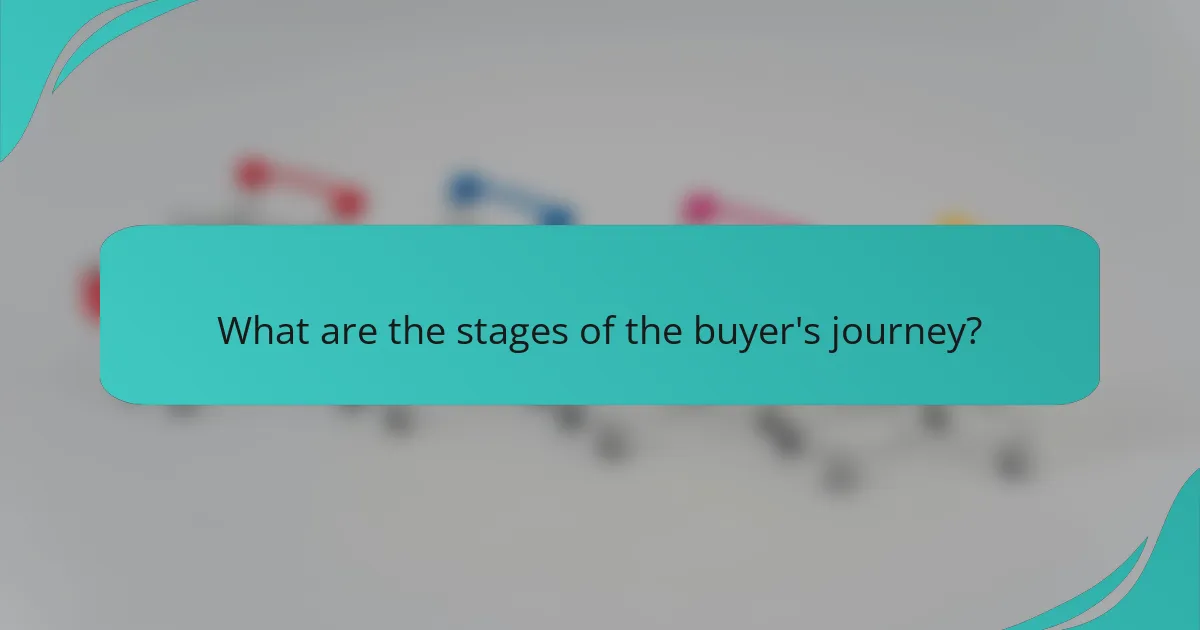
What are the stages of the buyer’s journey?
The buyer’s journey consists of three main stages: awareness, consideration, and decision. Each stage represents a different phase in the process a potential customer goes through before making a purchase.
Awareness stage overview
In the awareness stage, potential buyers recognize a problem or need but may not yet know about specific solutions. They often seek information to understand their situation better, which can include researching general topics related to their issue.
During this phase, businesses should focus on providing valuable content that addresses common pain points. Examples include blog posts, infographics, and educational videos that inform and engage the audience.
Consideration stage overview
The consideration stage occurs when buyers have identified their problem and are exploring various solutions. They compare different products or services, looking for options that best meet their needs.
At this point, companies should offer detailed information about their offerings, such as comparison guides, case studies, and webinars. This content helps potential customers evaluate their choices and understand the benefits of each solution.
Decision stage overview
In the decision stage, buyers are ready to make a purchase. They have narrowed down their options and are looking for the best fit, often considering factors like pricing, features, and customer support.
Businesses can facilitate this process by providing clear calls to action, customer testimonials, and detailed product descriptions. Offering limited-time discounts or free trials can also encourage buyers to finalize their decision.

What content is effective for each stage?
Effective content varies across the buyer’s journey stages: awareness, consideration, and decision. Tailoring your content to meet the specific needs of potential customers at each stage enhances engagement and conversion rates.
Blog posts for awareness
Blog posts are ideal for the awareness stage as they help educate potential customers about their problems and possible solutions. These articles should focus on general topics relevant to your audience, providing valuable information without pushing a specific product.
Consider using engaging headlines and SEO strategies to attract organic traffic. Topics might include industry trends, common challenges, or introductory guides. Aim for clarity and relevance to draw in readers who are just beginning their research.
Comparative guides for consideration
Comparative guides serve well in the consideration stage by helping potential buyers evaluate different options. These guides should outline the features, benefits, and drawbacks of various products or services within your niche.
Include side-by-side comparisons, pros and cons lists, and user testimonials to provide a balanced view. This content should guide readers toward understanding which options best meet their needs, making it easier for them to narrow down their choices.
Case studies for decision
Case studies are effective during the decision stage as they showcase real-life examples of how your product or service has solved problems for existing customers. These narratives build trust and demonstrate the tangible benefits of your offerings.
Include metrics and specific outcomes to illustrate success stories. Highlight challenges faced, solutions implemented, and results achieved. This concrete evidence can significantly influence potential buyers who are ready to make a final decision.

How to optimize content for lead generation?
To optimize content for lead generation, focus on creating valuable, relevant information that addresses the needs of your target audience. This involves understanding their buyer’s journey stages—awareness, consideration, and decision—and tailoring your content accordingly.
SEO best practices
Implementing SEO best practices is crucial for increasing the visibility of your content. Begin with keyword research to identify terms your audience uses during their search queries. Aim for a mix of short-tail and long-tail keywords to capture different stages of the buyer’s journey.
Ensure your content is structured with appropriate headings, meta descriptions, and alt tags for images. Regularly update your content to keep it fresh and relevant, which can boost your rankings in search engine results.
Call-to-action strategies
Effective call-to-action (CTA) strategies guide potential leads toward the next step in their journey. Use clear, compelling language that prompts immediate action, such as “Download our free guide” or “Sign up for a webinar.” Position CTAs prominently within your content to capture attention.
Consider A/B testing different CTAs to determine which resonates best with your audience. Monitor conversion rates to refine your approach and ensure your CTAs align with the content’s purpose and the buyer’s journey stage.
Landing page optimization
Landing page optimization is essential for converting visitors into leads. Start by ensuring your landing page has a clean, focused design that highlights your offer without distractions. Use concise, persuasive copy that clearly communicates the value of your offer.
Incorporate trust signals, such as testimonials or security badges, to increase credibility. Additionally, ensure your landing page is mobile-friendly, as a significant portion of users may access it via smartphones or tablets.
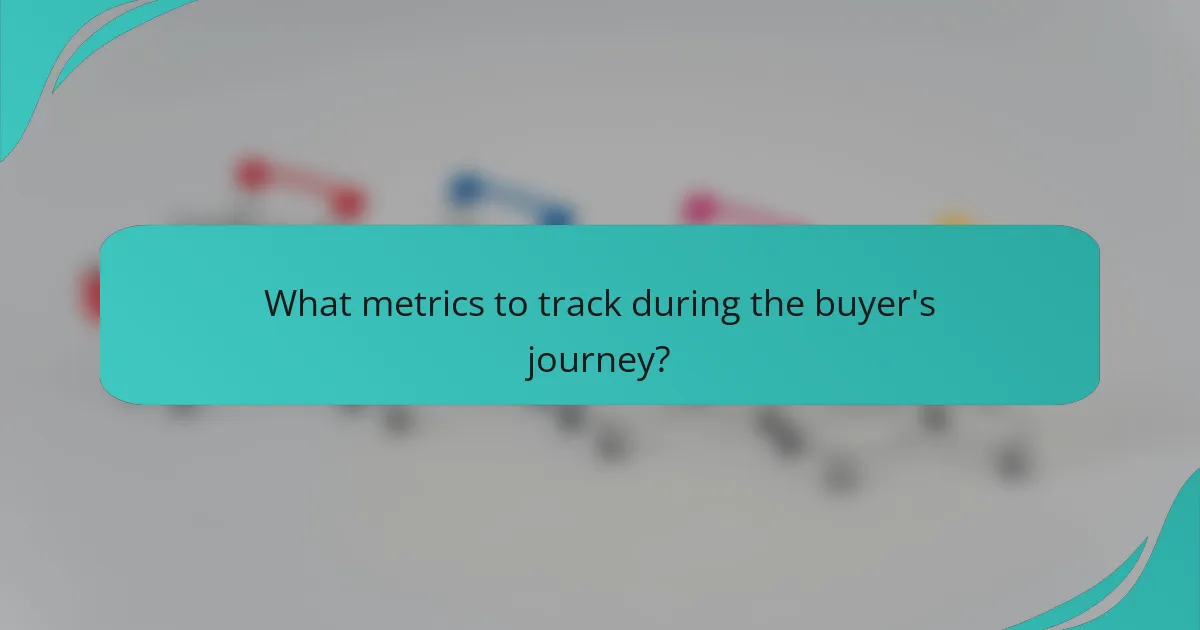
What metrics to track during the buyer’s journey?
Tracking the right metrics during the buyer’s journey is crucial for understanding customer behavior and optimizing marketing strategies. Key metrics include conversion rates, engagement metrics, and customer feedback, each providing insights into different stages of the journey.
Conversion rates
Conversion rates measure the percentage of visitors who complete a desired action, such as making a purchase or signing up for a newsletter. Monitoring these rates at various stages helps identify where potential customers drop off and what adjustments may be needed to improve sales.
For example, if the conversion rate from awareness to consideration is significantly lower than expected, it may indicate that the initial messaging is not resonating with the target audience. Aim for conversion rates in the low to mid double digits for effective campaigns.
Engagement metrics
Engagement metrics assess how actively potential buyers interact with your content and brand. This includes tracking website visits, time spent on pages, social media interactions, and email open rates. High engagement often correlates with a higher likelihood of conversion.
Utilize tools like Google Analytics to monitor these metrics and adjust your content strategy accordingly. For instance, if blog posts receive high traffic but low engagement, consider revising them to better meet audience needs.
Customer feedback
Customer feedback provides direct insights into the buyer’s experience and perceptions throughout their journey. Collecting feedback through surveys, reviews, and social media comments can highlight strengths and weaknesses in your approach.
Implement regular feedback loops, such as post-purchase surveys or follow-up emails, to gather this information. Aim to analyze feedback trends over time to identify areas for improvement, ensuring that customer voices guide your marketing strategies.

How to align marketing and sales teams?
Aligning marketing and sales teams involves creating a unified strategy that focuses on shared objectives and effective communication. This collaboration ensures that both teams work towards common goals, improving efficiency and driving revenue growth.
Shared goals and KPIs
Establishing shared goals and key performance indicators (KPIs) is essential for aligning marketing and sales teams. Both teams should agree on specific targets, such as lead conversion rates, customer acquisition costs, and revenue growth, to measure their collective success.
To facilitate alignment, consider using a balanced scorecard approach that incorporates both marketing and sales metrics. This can include metrics like the number of qualified leads generated by marketing and the sales team’s closing rates. Regularly reviewing these KPIs helps both teams stay accountable and adjust strategies as needed.
Common pitfalls include setting conflicting goals or failing to communicate progress. To avoid these issues, hold regular meetings to discuss performance against shared KPIs and make adjustments to strategies collaboratively. This ongoing dialogue fosters a culture of teamwork and mutual support.



